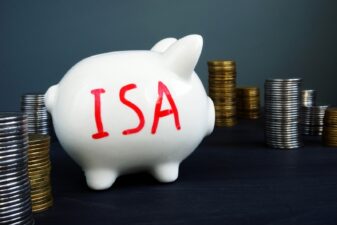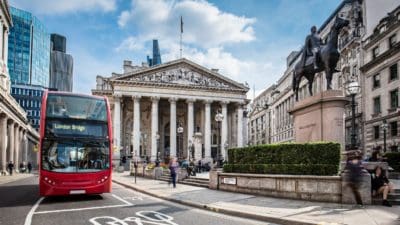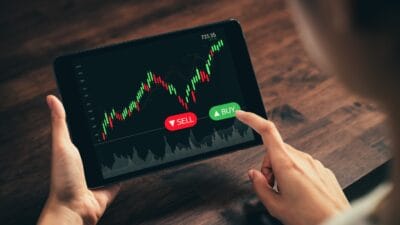Lately, I’ve been running some tests to gauge business and financial quality to see if dividends seem built-to-last at some popular FTSE 100 companies.
Of the firm’s looked at, Lloyds Banking Group (LSE: LLOY), Barclays (LSE: BARC) and BP (LSE: BP) scored amongst the lowest, suggesting fragile forward payouts, and here’s why:
Dividend records
A decent dividend record is one factor to consider, although what happens in the future is what really counts.
Lloyds Banking Group failed to pay a dividend over the last five years, although it expects to restart payments soon. Barclays struggled to maintain its dividend, but didn’t raise it in recent years.
BP is building its dividend back up since cancelling several quarterly payments during the depths of its 2010 oil-blow-out crisis in the Gulf of Mexico. The payout advanced 90% since those dividend misses during 2010, scoring a compound annual growth rate of 17.5%.
For their dividend records, I scored Lloyds Banking Group 0/5, Barclays 2/5 and BP 3/5.
Dividend cover
Lloyds expects its 2015 adjusted earnings to cover its dividend around 2.8 times and its 2016 earnings to cover the dividend twice. Barclays thinks its 2015 adjusted earnings will cover its dividend around 2.7 times, and BP anticipates earnings covering its dividend only partially, around 0.9 times.
My ‘ideal’ dividend payer would cover its cash distribution with earnings at least twice. However, cash pays dividends, so it’s worth digging into how well, or poorly, the three companies cover their dividend payouts with free cash flow — that’s cash flow after maintenance capital expenditure.
On dividend cover from earnings, though, Lloyds and Barclays scored 4/5, and BP 0/5.
Cash generation
Dividend cover from earnings doesn’t help pay dividends if cash flow doesn’t support profits.
Lloyds’ and Barclays’ cash-generation record, as with most banks’, is a woolly indicator of business health compared with businesses in many other sectors. Accounting quirks tend to corrupt the cash-flow record with banks –such as how the banks classify their loans and investments, for example–which seems to bolster or lower cash-flow numbers artificially.
BP’s cash-generating abilities served the firm well through recent challenges. However, BP’s cash performance could suffer if oil prices remain low.
For their ability to generate steady flows of cash to support dividend payments, Lloyds Banking Group scored 2/5, Barclays 3/5 and BP 4/5.
Debt
Firms can’t pay big dividends if most of their free cash flow goes to service big borrowings. That’s why big debts are undesirable in dividend-led investments.
Most banks carry big external debts. Lloyds recent balance sheet entry for debt securities is more than ten times the level of estimated 2014 operating profit, and Barclays’ balance sheet entry for debt securities exceeds 13 times the level of its estimated operating profit this year. However, bank debts come in many forms, so that’s not Lloyds’ and Barclays’ only exposure to borrowed money
Meanwhile, BP’s debt-load stands around 1.4 times the level of its net cash flow from operations, which appears reasonable.
For their circumstances around debt, Lloyds and Barclays scored 1/5, and BP 4/5.
Degree of cyclicality
We saw in the financial crisis of last decade how cyclical the banks are. Fluctuating share prices and valuations are the order of the day with banks such as Lloyds and Barclays, as macro-economic fluctuations keep cash flows, profits and asset valuations moving about.
BP’s share price travelled from 466p at the start of 2011 to around 450p today, providing investors with a modest 3.4% capital loss, although the share price remained volatile over the period because the oil sector is highly cyclical and the firm is still suffering operational drag thanks to the on-going effects from the oil spill in the US. Recently, BP plunged into a lower oil price environment to compound its Gulf-of-Mexico troubles.
For their exposure to cyclical effects, I scored all three firms 1/5.
The final reckoning
The overall scores are low despite differences in their make-up.
|
Lloyds |
Barclays |
BP |
|
|
Dividend record |
0 |
2 |
3 |
|
Dividend cover |
4 |
4 |
0 |
|
Cash generation |
2 |
3 |
4 |
|
Debt |
1 |
1 |
4 |
|
Degree of cyclicality |
1 |
1 |
1 |
|
Total score out of 25 |
8 |
11 |
12 |
These are the lowest scorers of the firms I looked at and, as such, I’d reject them as long-term dividend-led investments.
The biggest red flag, for me, is the high degree of cyclicality inherent in each firm’s business — I can’t see the point in gathering an income stream if fluctuating capital is going to produce a highly uncertain outcome on total investor returns over the long run.






